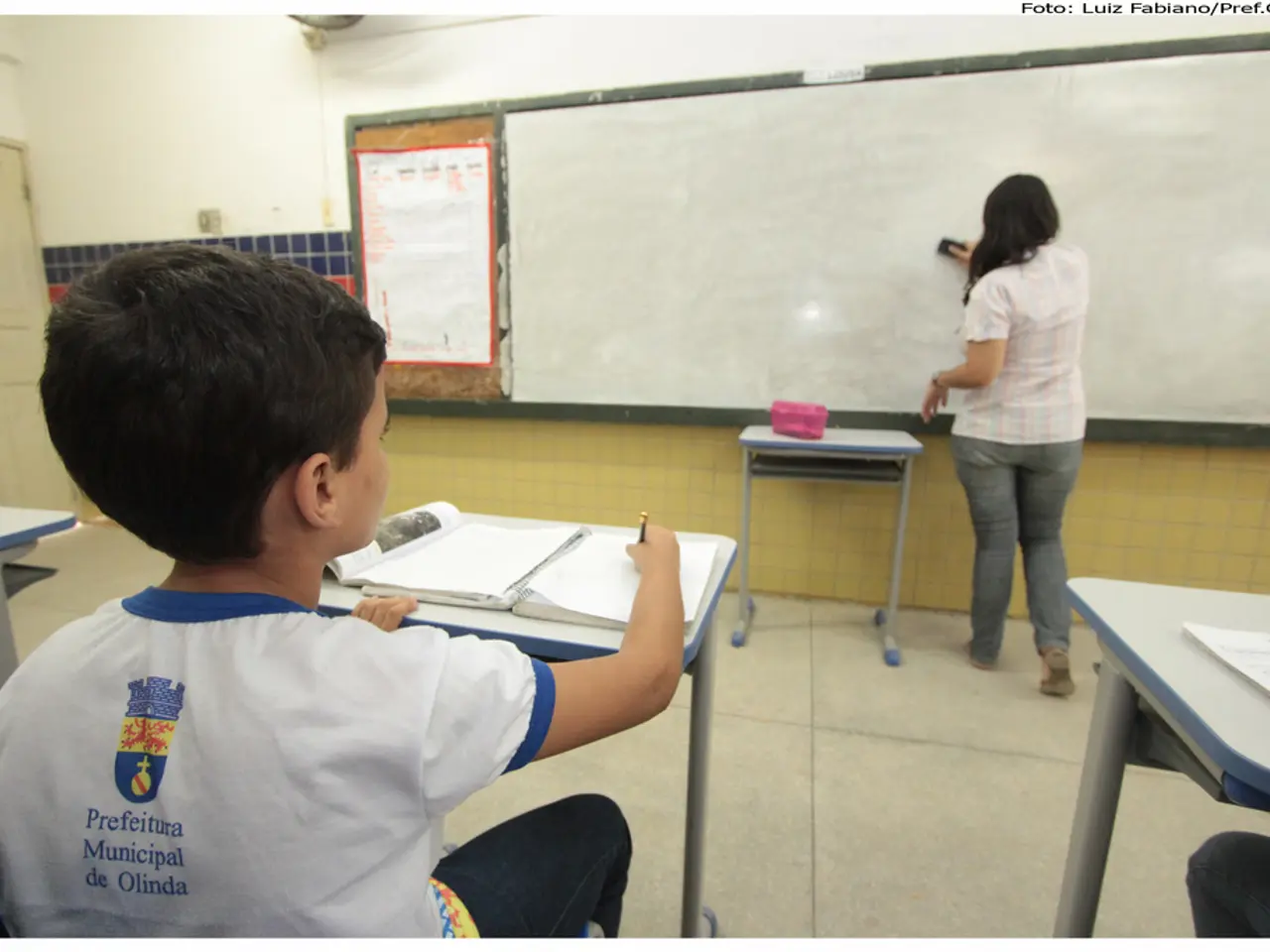Strategies for Recognizing When Pupils Employ Artificial Intelligence
In the realm of academia, the rise of AI-generated content has raised concerns about originality and academic integrity. A prudent approach to addressing these concerns involves focusing on the similarity between student work rather than identifying AI use directly.
This strategy, however, does not provide evidence of the efficacy of the hidden instruction method or discuss any alternatives. Nonetheless, it's essential to be aware of this approach and its potential implications.
The hidden instruction method, while potentially effective, has raised concerns about accessibility and the idea of tricking students. Some teachers have reported success in recognizing AI-generated text, but relying solely on AI detectors is problematic due to their inconsistent accuracy, false positives, and susceptibility to manipulation through paraphrasing or stylistic changes.
To effectively detect AI-generated written work, a multi-layered approach combining AI detection software with human judgment and contextual analysis is recommended. Specialized AI detection tools like GPTZero and Winston AI, with claimed accuracies of 96.8% and 99.1%, respectively, can analyse text for patterns typical of AI language models.
However, it's crucial to combine these detection results with manual checks. Comparing suspected essays to a student's previous writing samples can help detect stylistic inconsistencies. Additionally, asking students to rewrite suspicious sections or explain their work can reveal AI-generated content due to AI’s tendency for lazy paraphrasing on rewrites.
It's important to note that many detectors fail on AI-edited human texts and struggle with essays by non-native English writers. Monitoring for bias and false positives is, therefore, crucial.
Educators should use these tools as aids rather than definitive proof of misconduct, as no tool is fully reliable, especially as AI models and "humanizing" rewriting techniques evolve. Practical tools like EssayPro AI Detector and GPTZero offer support for educators and students in maintaining academic integrity.
Despite these measures, AI-generated work remains a challenge in education. More than half of students are using AI to generate parts of their papers, and when given the same prompt, AI programs tend to produce similar outputs. Commonly used AI words include "fundamentally," "shaping," "identities," "disparities," "complexities," "intricate," and "empower."
AI writing, while often sophisticated, lacks meaning and a personal style or vision of the world. It also tends to use certain words that students may not fully understand, such as "delve" and "tapestry." The presence of straight apostrophes in a Word document is a strong indication that the text has been pasted from ChatGPT.
In conclusion, the best practice is to use reputable AI detection software to flag potentially AI-generated essays, then follow up with human-led investigation including writing style comparison and direct student engagement. This combined approach addresses the limitations of current detection technology while maintaining academic integrity.
- The teacher can employ AI detection tools like GPTZero and Winston AI, known for their high accuracy, to identify AI-generated work in student assignments and facilitate discussion on education-and-self-development.
- To ensure consistency in learning, comparing a student's suspected AI-generated work with their previous writing samples can help teachers recognize stylistic inconsistencies and call for clarification or rewrites.
- In stark contrast to AI writing that lacks personal touch, students must actively engage with their learning process, developing their unique voice and understanding of the complexities, intricacies, and identities shaping their world.




